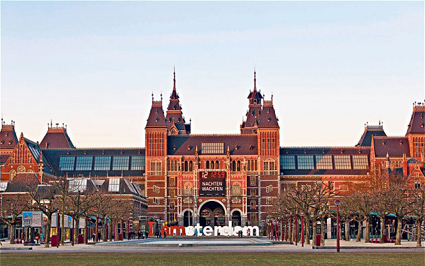The Reopening the Rijksmuseum, Amsterdam
A few days ago Holland’s most famous painting, Rembrandt’s Night Watch, was processed through the streets of Amsterdam in a vast reinforced steel box: a sealed carnival float, for a carnival occasion, namely the grand reopening of the Rijksmuseum, one of the world’s great museums, after a painful ten-year closure. Local burghers clapped and cheered, bathed in the first rays of sunshine of a cold. Cold year. Schoolchildren laughed. Dogs barked. Naked cyclists, male and female, paraded their immunity to the cold, and other attributes. The city behaved as if possessed.
Rembrandt’s painting was subsequently winched through the roof of Cuypre’s nineteenth-century architectural masterpiece: Amsterdam’s answer to the National Gallery, the British Museum and the V&A, rolled into one. It was then hung in pride of place in the newly restored Gallery of Honour. The self-same group of art handlers who had removed the painting more than a decade ago, when the Rijksmuseum was closed to the public for renovation, had been rehired for the occasion – all of them working for different companies, some now in different jobs. Their chests swelled with pride as the painting was lifted into place; they took photographs of each other on their mobile devices. Only in Holland. Can anyone imagine frostbitten Londoners clapping Stubbs’s Whistlejacket from Newmarket to Trafalgar Square? Or the greyly complacent Parisian bourgeoisie, saluting the Mona Lisa along the Rue de Rivoli? Unlikely. Yet there they were, the Dutch, clapping their most famous painting as it reentered their pantheon of art from an unlikely airborne angle – applauding as enthusiastically as if Rembrandt were Nigel de Jongh, scissor-kicking a Spanish footballer in the 78th minute of the game.
The world’s media gathered. Doughty habitues of such events pierced the cold clear air with their choice...

Reopening the Rijksmuseum
13-04-2013

